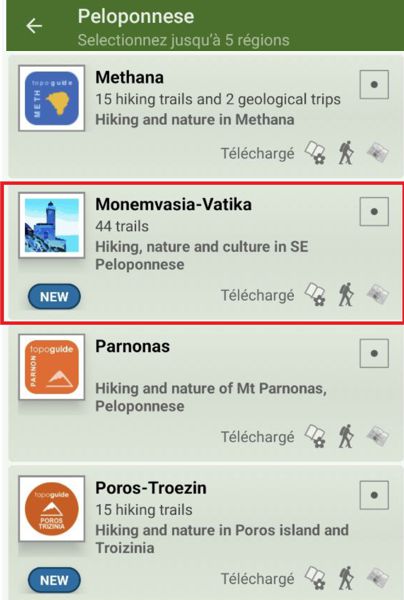The vegetation in Vatika and Maleas peninsula
The vegetation in Vatika and Maleas peninsula
Text and photos by T. Adamakopoulos
In Vatika, most of the area around the settlements and farmland is covered with rocks, phrygana and tall maquis vegetation.
There are no natural Mediterranean coniferous forests in the area; the tall vegetation is actually made up by maquis species, that thanks to a less intense use by man or to a lower grazing pressure were able to grow into tall trees. These created small, compact clumps that often show a very dense and impenetrable underfloor.
Smaller forests made up by pines and oaks have only a local presence. In the ravines, poplars and Oriental Plane complete the basic list of trees of the area.
Semi-natural agricultural land
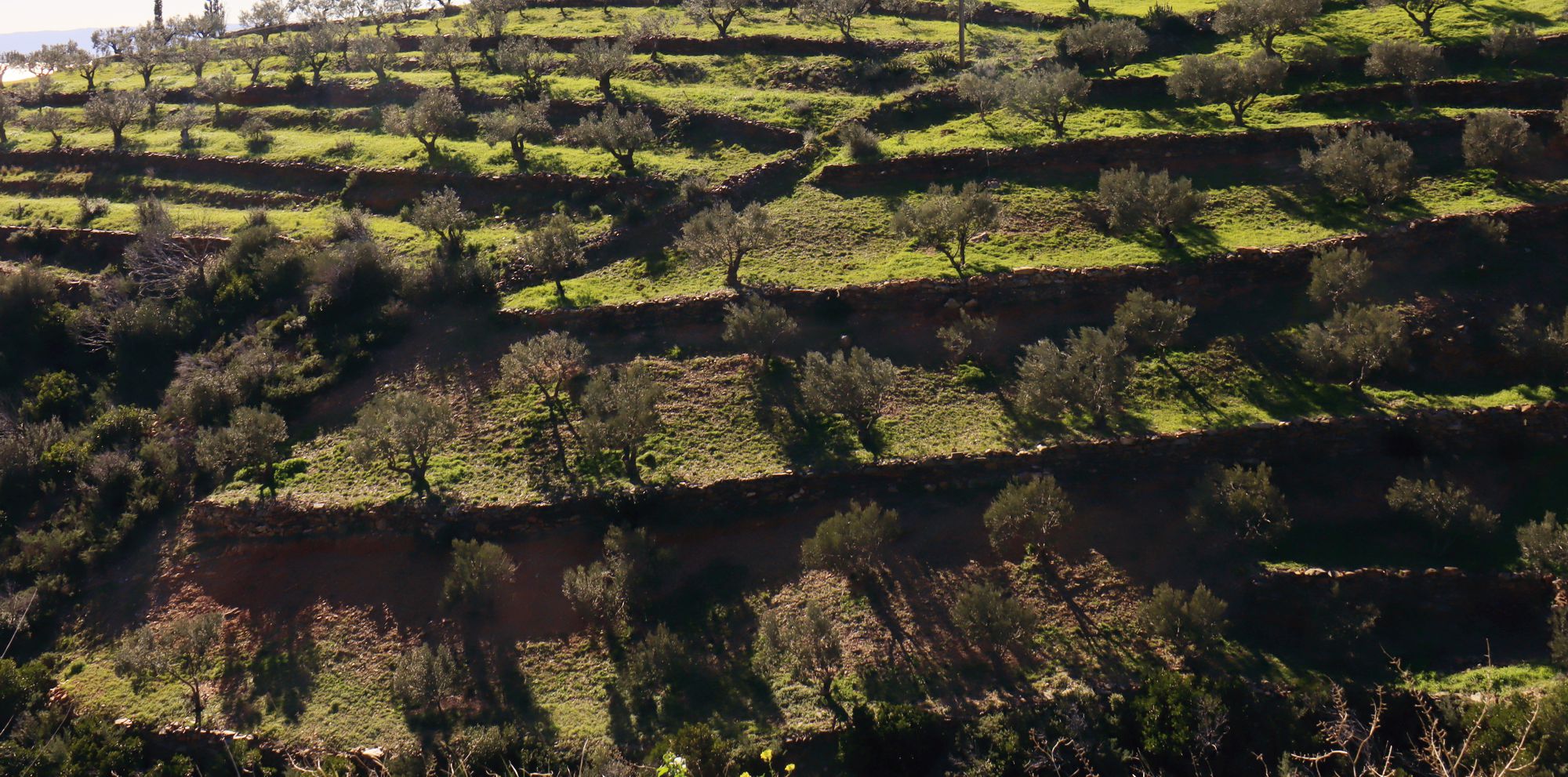
Click to enlarge
The farmland around Lachi, Agios Nikolaos and Velanidia, i.e. the villages above the lowland zone of Neapolis, forms a kind of semi-natural mosaic landscape that includes patches of maquis and phrygana vegetation.
This vegetation diversity is increased by the presence, on the farmed terraces and fields, of dry-stone walls and of scattered enclaves of natural vegetation. At the same time, the influx of nutrients and water may favor or discourage the presence of plants and animals, depending on the ecological needs of each species.
All these factors have concurred to create a new (semi) natural ecosystem, not so different from the primordial one, where a large number of species can thrive.
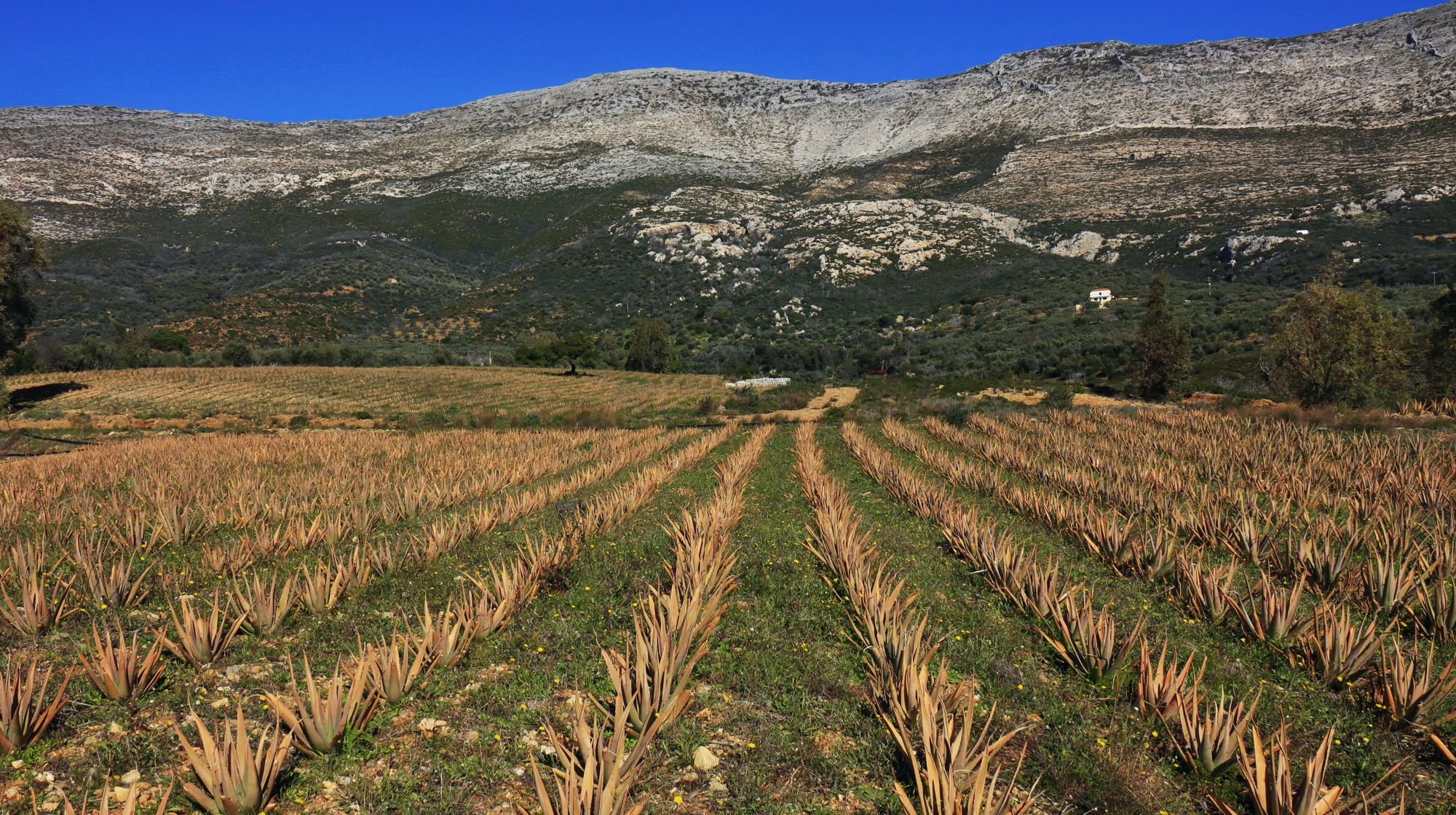
Click to enlarge
In contrast, newer crops such as those of Aloe vera include plants that are completely alien to the wider ecosystem. Fortunately, these crops are still very small.
The phrygana vegetation
In Vatika, most of the area outside settlements and farmland is covered by phrygana vegetation.
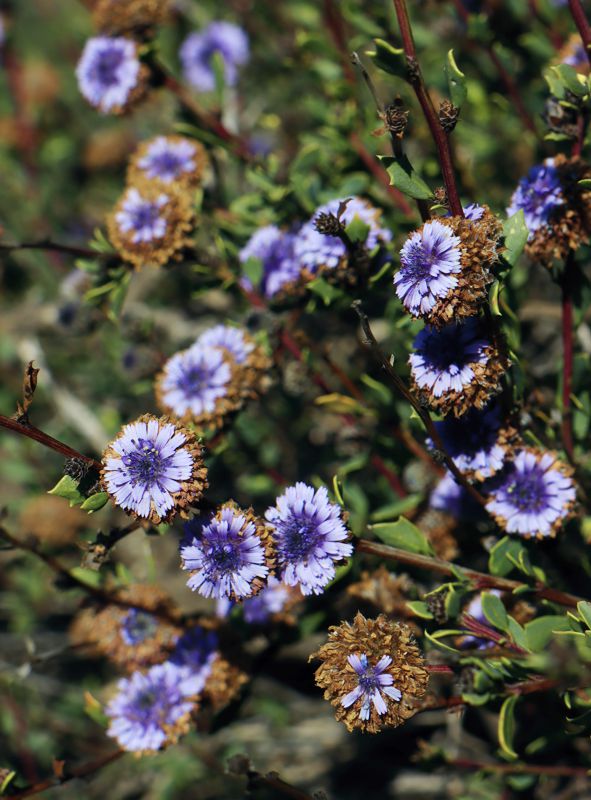
The Phrygana is a group of extremely hardy small and medium-sized shrubs and woody plants.
The plants species of this particular type of vegetation have appropriate adaptations that allow them to thrive on unfavorable soils and to withstand a prolonged dry season, the constant winds that dehydrate their leaves and frequent wildfires.
The most common Phrygana species of the area include the Thorny Burnet (Sarcopoterium spinosum), the Jerusalem Sage (Phlomis fruticosa), the Shrubby Globularia (Globularia alypum), the Spiny Broom (Calicotome villosa) and the Tree Spurge (Euphorbia dendroides).
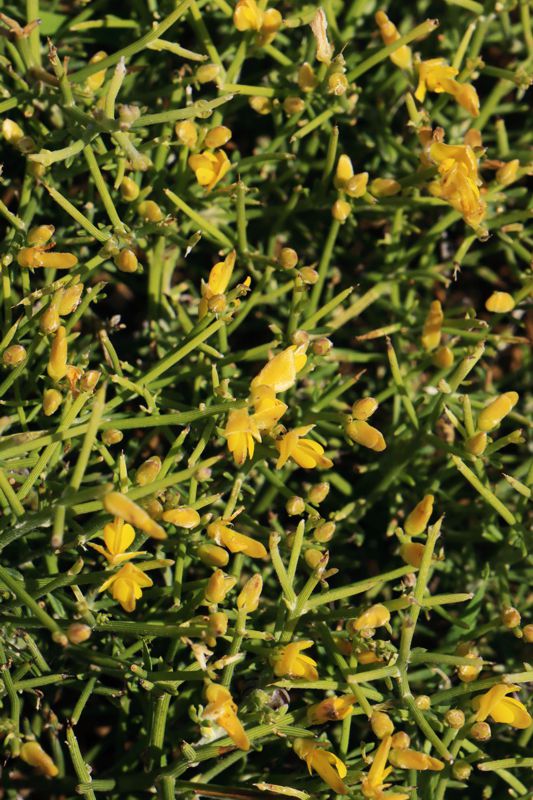
Other very common species are the yellow, spiny Anthyllis hermanniae, heathers (Erica manipuliflora and Erica arborea) and cistuses (Cistus salviifolius and Cistus creticus). Among them hide even smaller bushes, such as Prasius majus and Ferula communis.
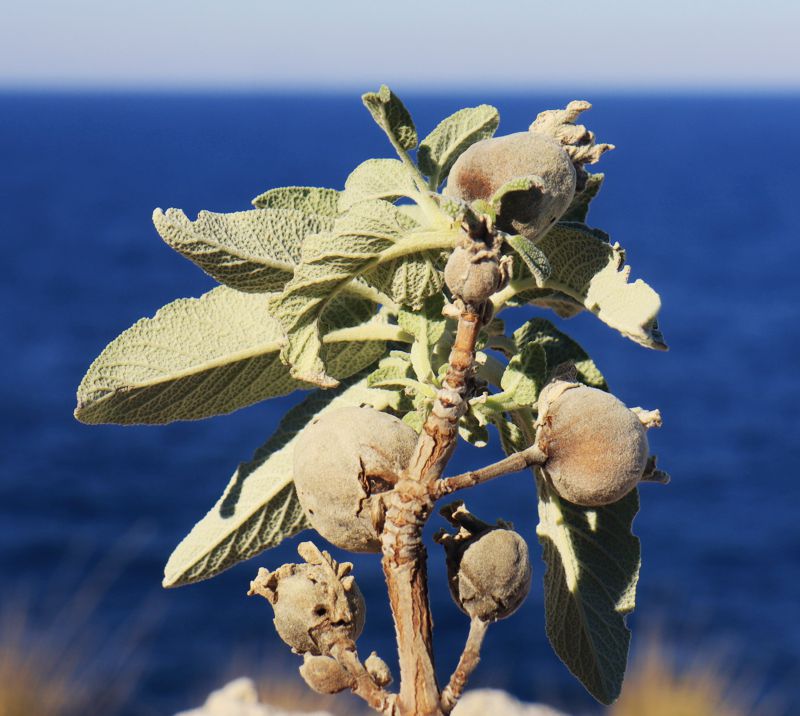
One of the special features of the inhospitable zone from Agios Myros to the lighthouse of Kavomalias is the abundance of Three-lobed Sages (Salvia fruticosa or S. triloba). These fragrant bushes produce small fruits that look like apples – hence their common Greek name “faskomilia” that can be translated into "sage-apple tree".
The maquis vegetation
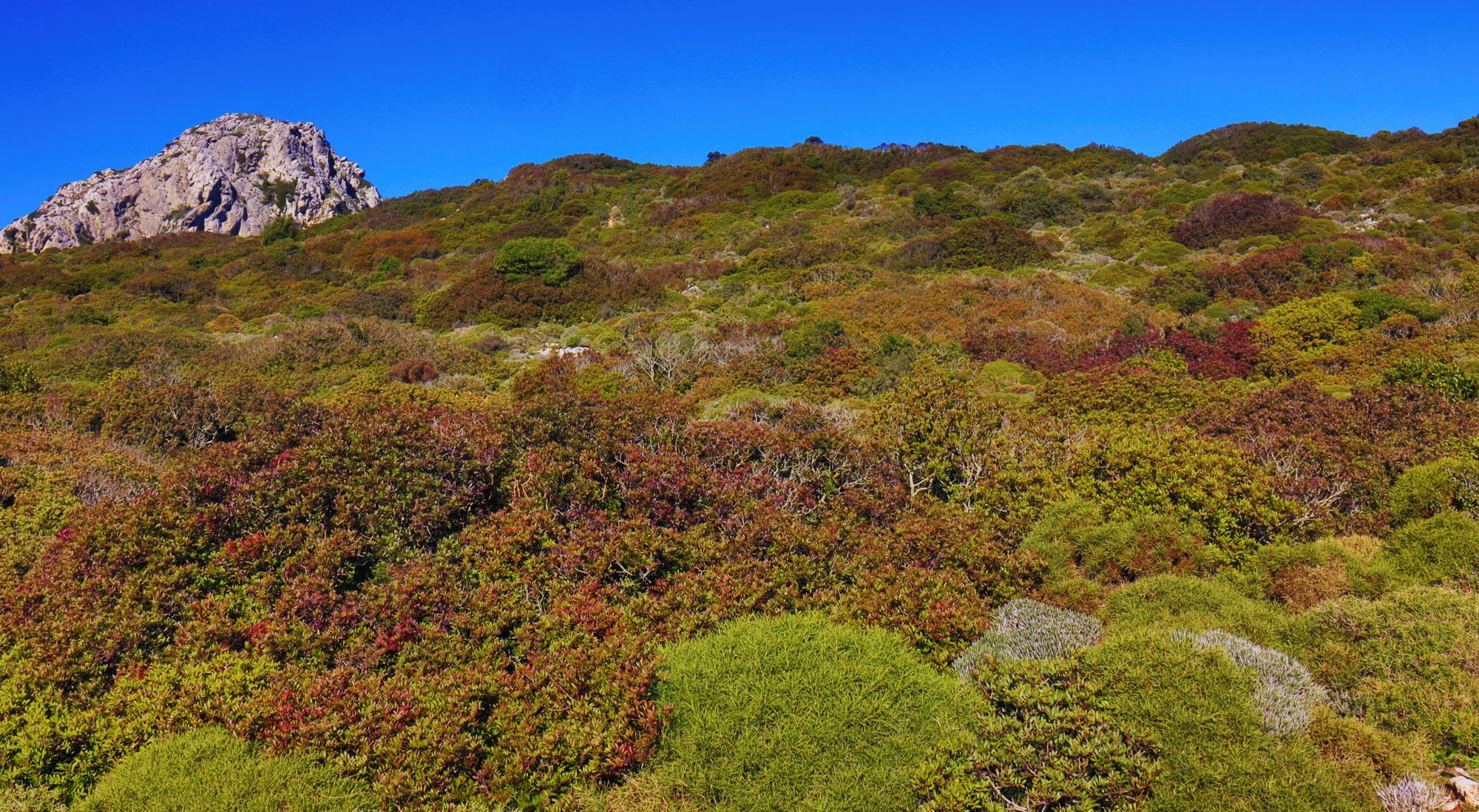
Click to enlarge
The maquis vegetation in Vatika is composed of common species of the Mediterranean zone: Kermes Oaks (Quercus coccifera), Strawberry Trees (Arbutus unedo), Lentiscs (Pistacia lentiscus), Turpentine Trees (Pistacia terebinthus) and Judas Trees (Cercis siliquastrum); the first three species are the most common. These trees hide a dense underfloor of species of phrygana or small thorny bushes.
Locally we find some less common species of tall shrubs, such as the Sumach (Rhus coriaria) and the Castor-oil Tree (Ricinus communis).
The trees
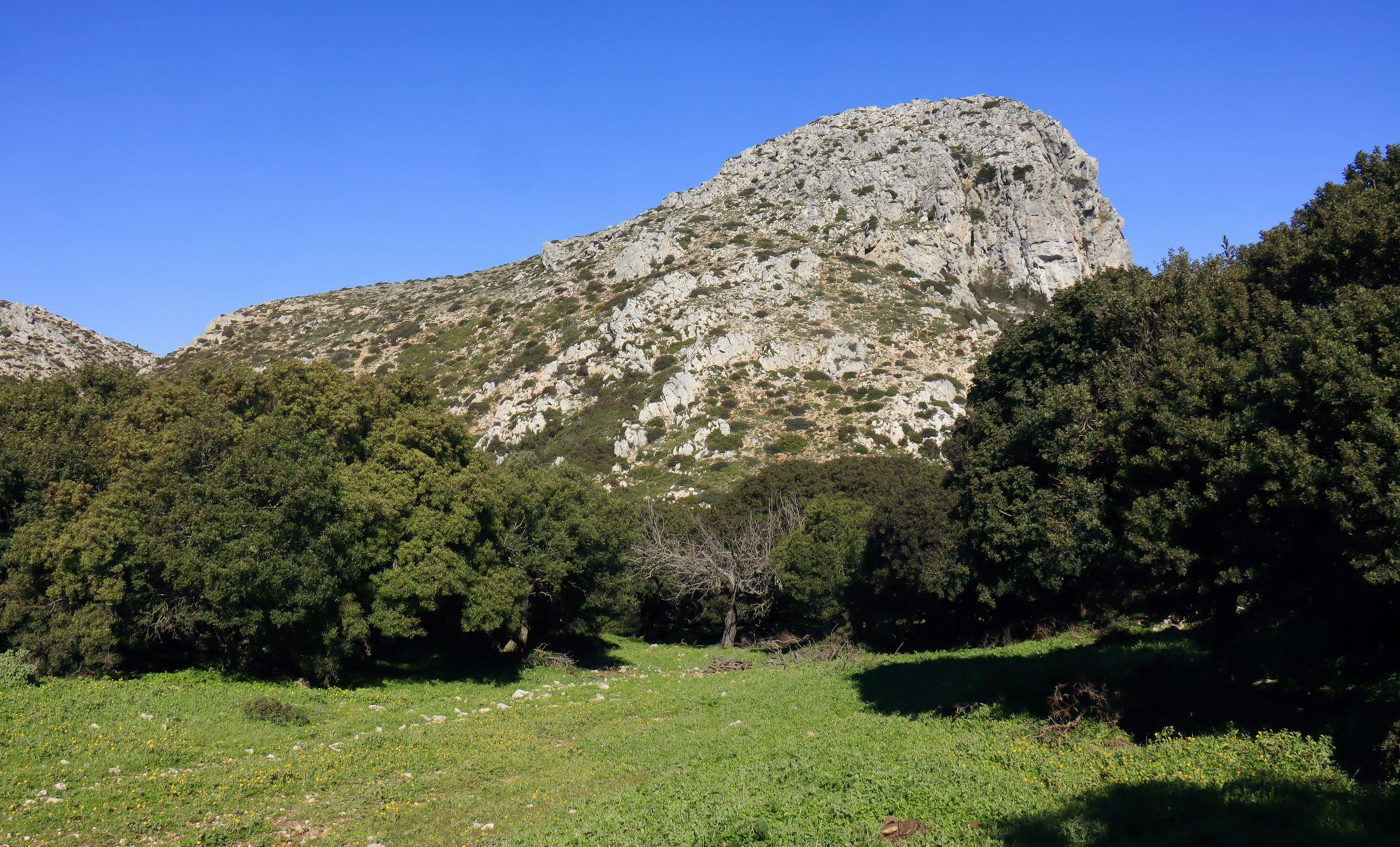
Click to enlarge
It is very likely that the area of Vatika was once covered with forests of Aleppo Pine and Holm Oaks. Today, however, the arboreal vegetation of the area is limited to isolated clumps - often on difficult to reach slopes - made up by species of the maquis that for various reasons managed to complete their growth into tall trees. For example, around Velanidia we find undisturbed forest thickets composed of tall Kermes Oaks, Holm Oaks and maples. The effect of the lack of historical pressure from man and/or animal grazing is also visible in some places where we can see Lentiscs in arboreal form, that reach 6-8 meters in height. In old meadows, on terraces and in clearings we can find also a few Almond-leaved Pears (Pyrus amygdaliformis).
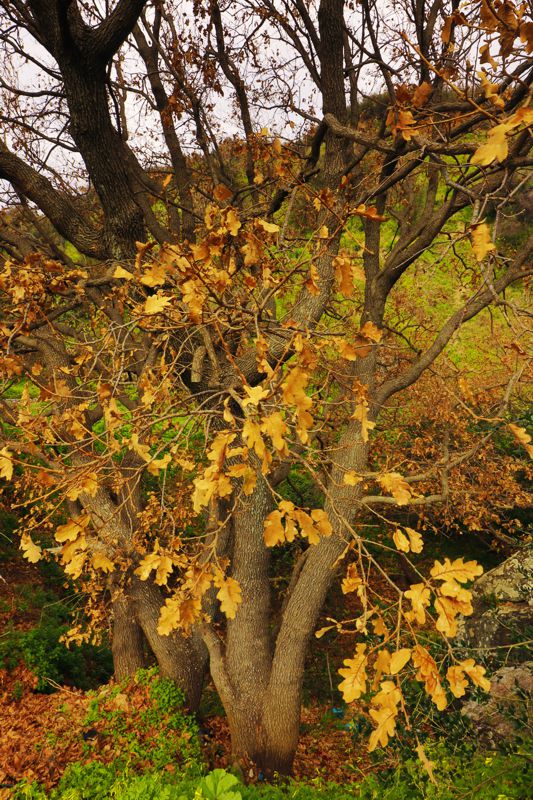
In addition to the arboreal form of the Kermes Oaks, the oaks of the region include another evergreen species, the Holm Oak (Quercus ilex) and a deciduous species, the White Oak (Quercus pubescens). Although the latter has today only a sporadic presence in locations with favorable soil and climatic conditions, we assume that these are remnants of older, larger forests of the area.
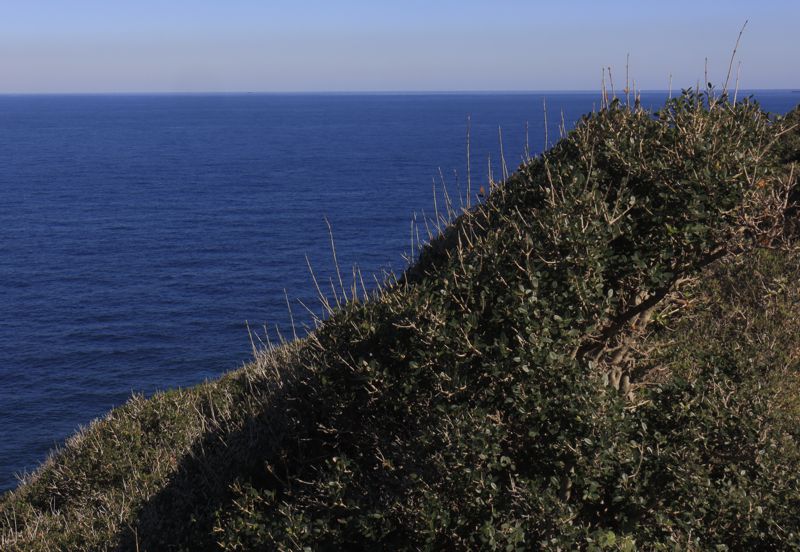
One of the most characteristic and widespread species in the Mediterranean zone is the wild olive tree. In Vatika, the wild olive appears mainly as a shrub, with its characteristic disordered structure of the trunk and branches. In some places it manages to grow taller, looking then more like a dark olive tree. On the path to Cape Maleas the wild olive trees have all taken inclined forms under the constant whipping of the eastern winds.
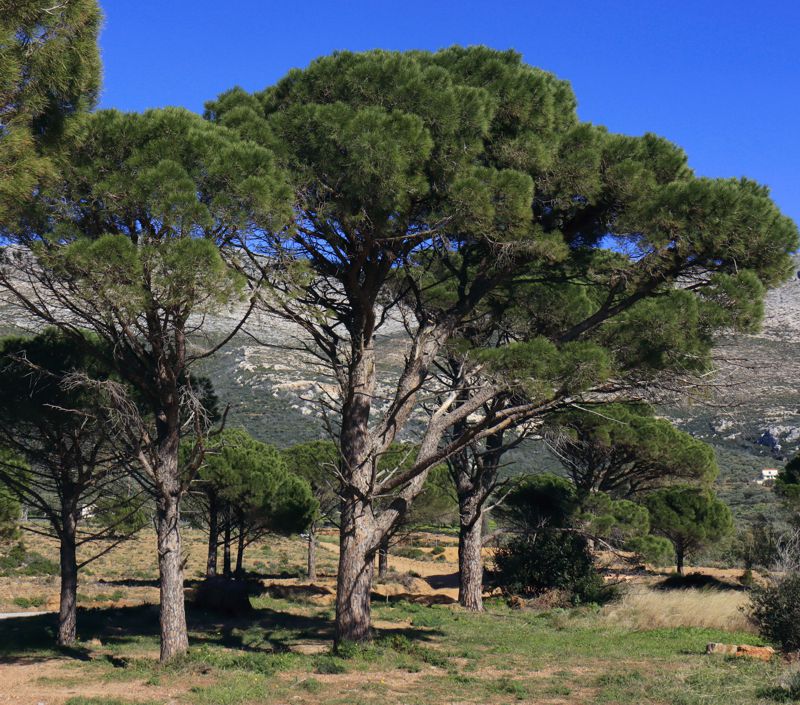
Although, apparently, pines used to cover large areas in the past, there are no natural pine forests in Vatika today. The small clusters of Aleppo Pine (Pinus halepensis) that we see above Faraklo and elsewhere are the result of plantations.
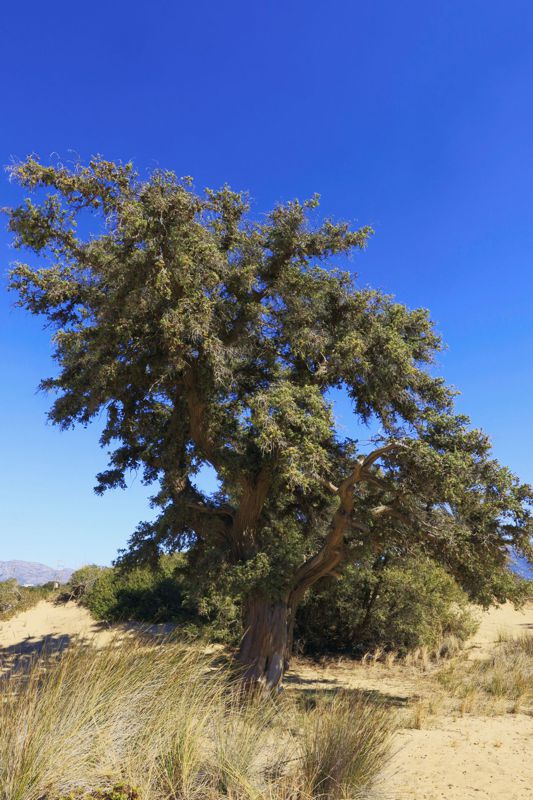
The Peloponnesian coast opposite of Elafonisos is home to a sparse forest of Phoenician Juniper (Juniperus phoenicea). Most individuals of this interesting group grow on the stable part of the sand dunes and have a bushy structure.
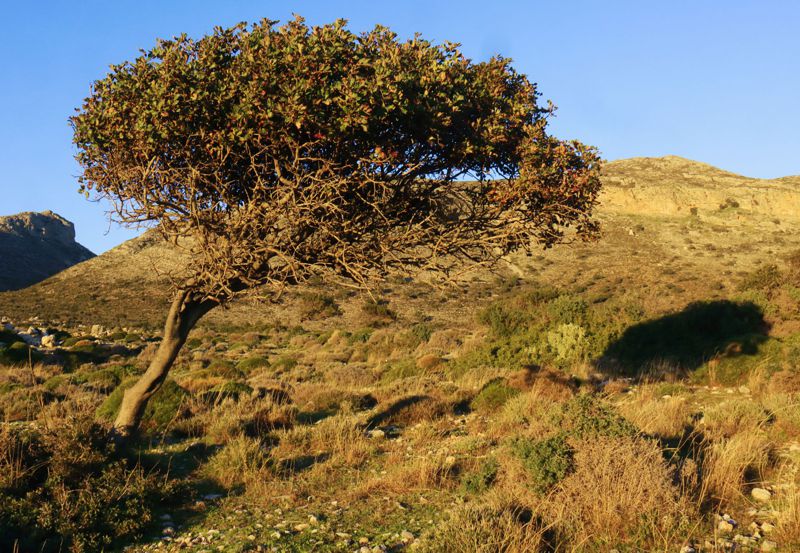
In places, thanks to a favorable soil, an old fencing or a restriction of passage or use, we may find scattered Junipers, Carob Trees, large Wild Olive, Holm Oaks, and Cretan Maples (Acer sempervirens).
In the ravines abound Oriental Planes (Platanus orientalis), poplars (Populus sp.) and Oleanders (Nerium oleander).
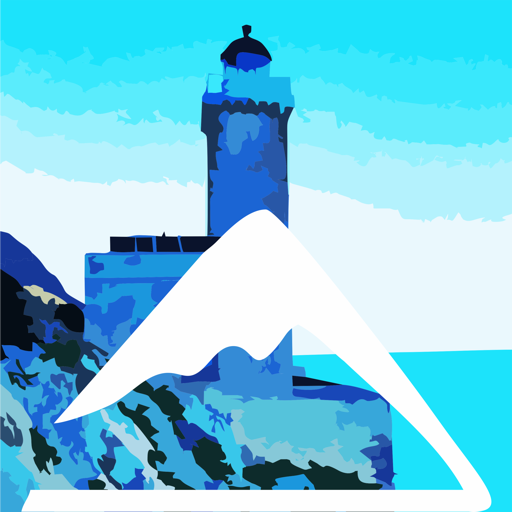
topoguide Greece
A GUIDE FOR KYPARISSI, ZARAKAS,
MONEMVASIA, VATIKA AND CAPE MALEAS
The guide Monemvasia topoguide is available for Android devices along with dozens of other regions of Greece, within the general application topoguide Greece. Monemvasia topoguide is a member of the Pelponnese group. Get Monemvasia topoguide as an in-app purchase from the topoguide Greece available regions list.
The Gythio topoguide guide is also available for iOS devices (iPhone and iPad) through the general hiker application Topoguide Greece. Get Monemvasia topoguide as an in-app purchase via the available regions list.
It is very interesting that topoguide Greece has the ability to simultaneously display up to 15 different areas, thus allowing an overall view of the Peloponnese and the easy alternation of hundreds of hiking routes, hundreds of Points of Interest and dozens of pages of the guide with innumerable photos.
